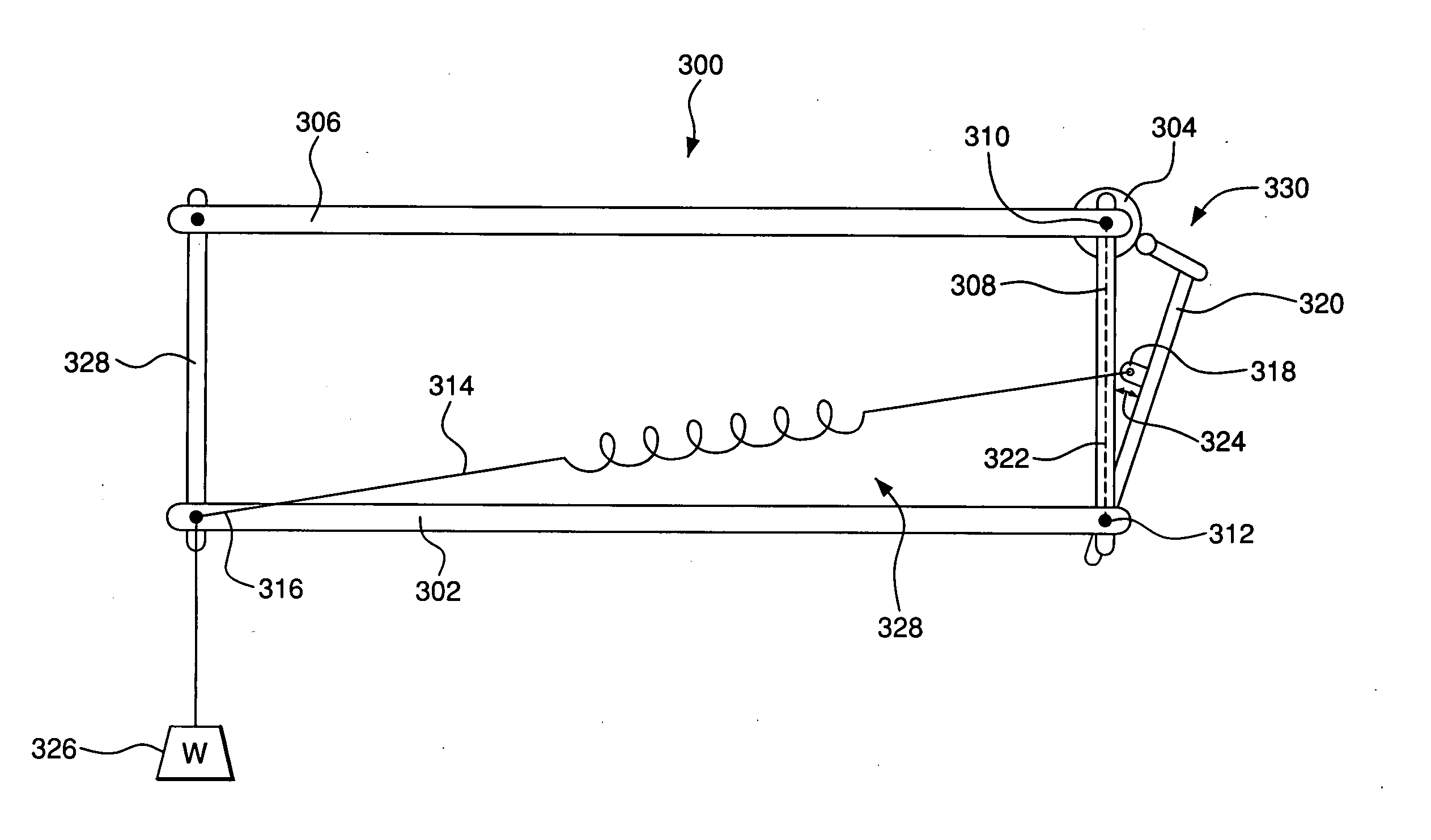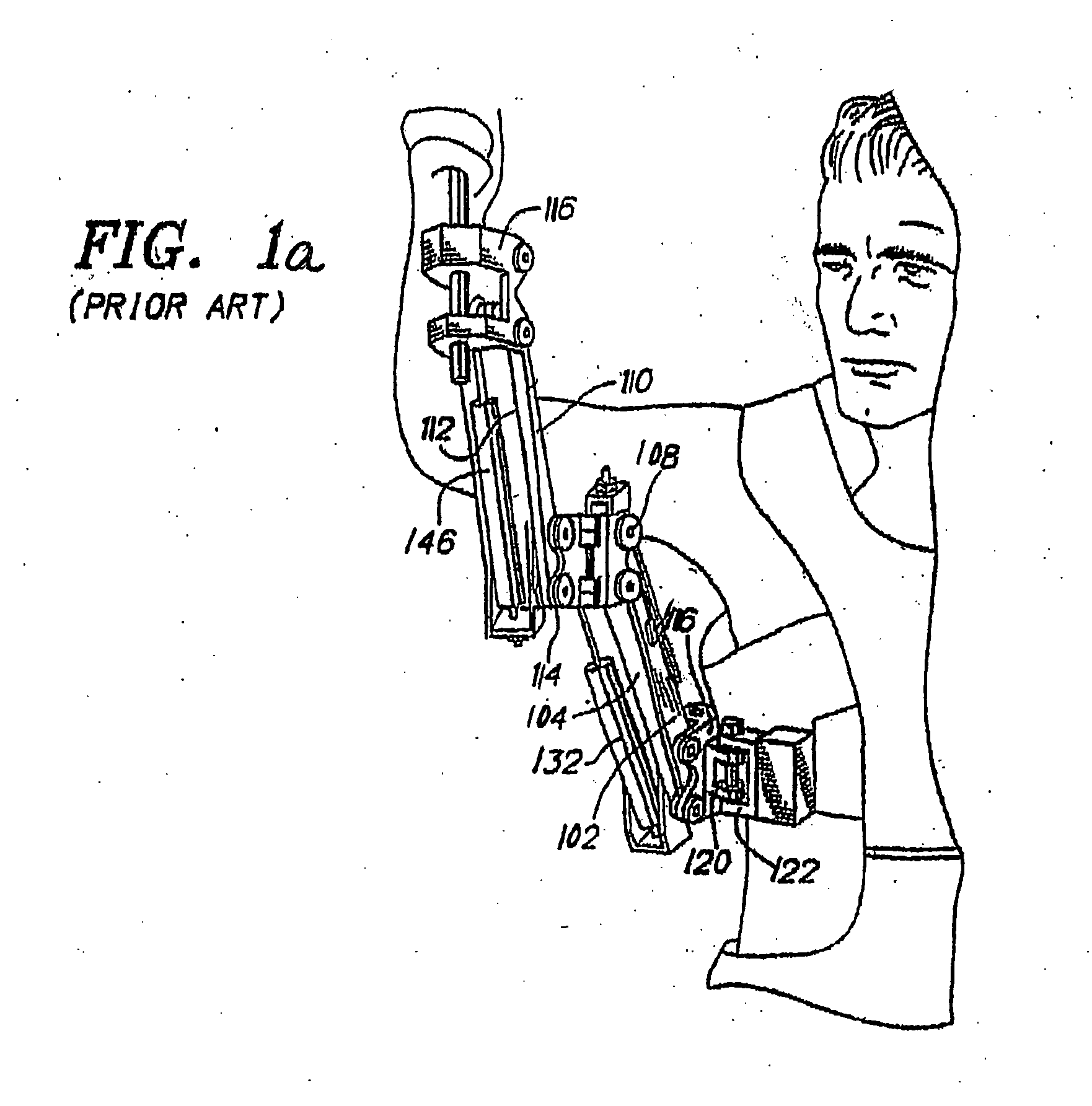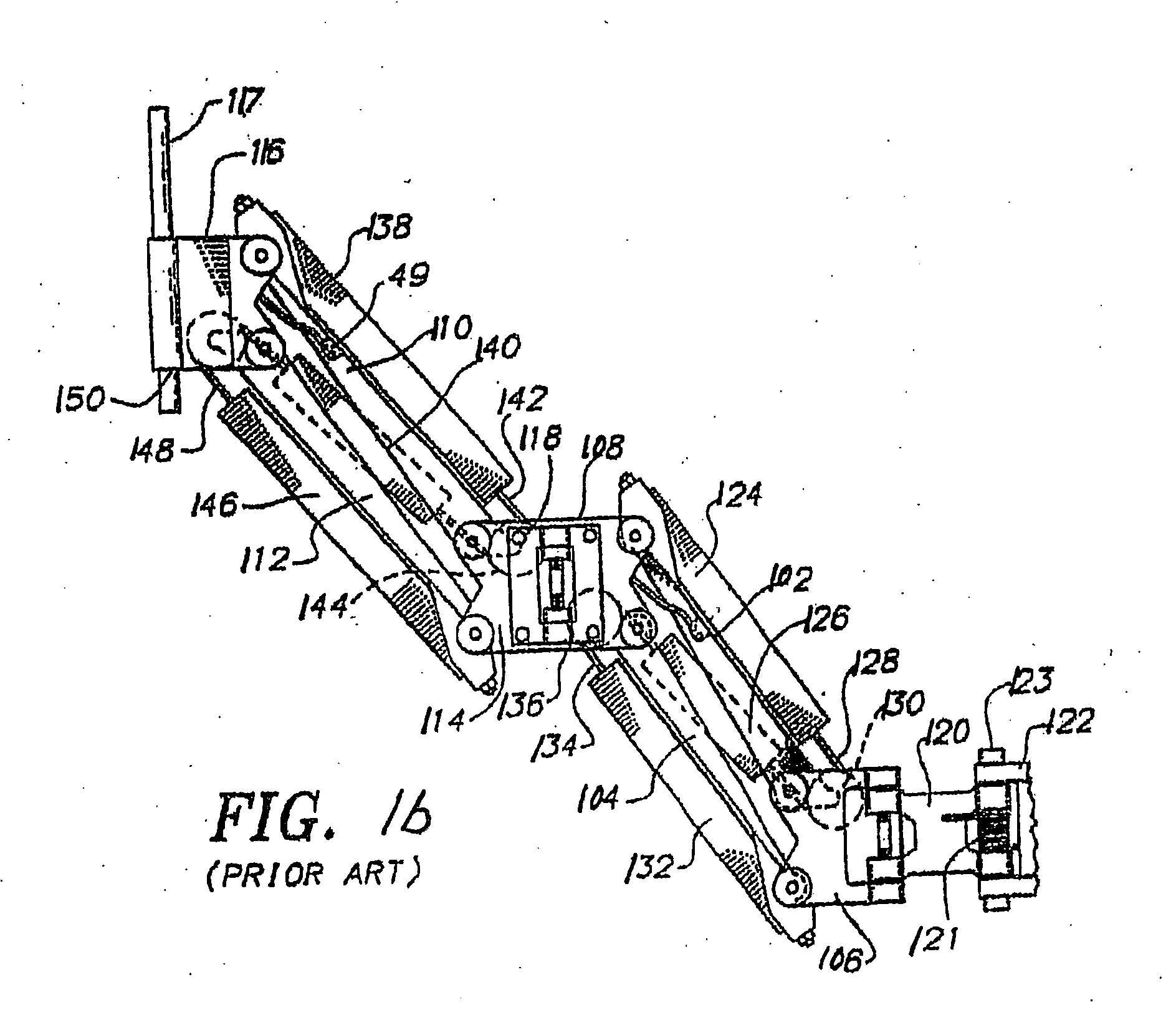Equipoising support apparatus
- Summary
- Abstract
- Description
- Claims
- Application Information
AI Technical Summary
Benefits of technology
Problems solved by technology
Method used
Image
Examples
Embodiment Construction
[0057]FIGS. 1 and 2 illustrate a support apparatus of the prior art, which the inventor originally devised to obtain stabilized motion picture film and video images and which was offered for sale under the trademark “Steadicam®”. As illustrated, the support arm for the apparatus includes a pair of parallel upper arms links 102, 104, which are pivotally coupled at one end to a connector hinge bracket 106. The other ends of the upper arm links 102,104 are pivotally coupled to an upper arm medial hinge bracket 108. A second pair of parallel forearm links 110, 112 are pivotally coupled between a forearm medial bracket 114 and a camera support bracket 116. A camera mounting pin 117 is provided in the camera support bracket 116.
[0058] The upper arm medial bracket 108 and the forearm medial bracket 14 are rotatably coupled together along one side by a hinge 118. The connector hinge bracket 106 is rotatably coupled at its center to one end of a lower support hinge plate 120. The other end ...
PUM
 Login to View More
Login to View More Abstract
Description
Claims
Application Information
 Login to View More
Login to View More - R&D
- Intellectual Property
- Life Sciences
- Materials
- Tech Scout
- Unparalleled Data Quality
- Higher Quality Content
- 60% Fewer Hallucinations
Browse by: Latest US Patents, China's latest patents, Technical Efficacy Thesaurus, Application Domain, Technology Topic, Popular Technical Reports.
© 2025 PatSnap. All rights reserved.Legal|Privacy policy|Modern Slavery Act Transparency Statement|Sitemap|About US| Contact US: help@patsnap.com



